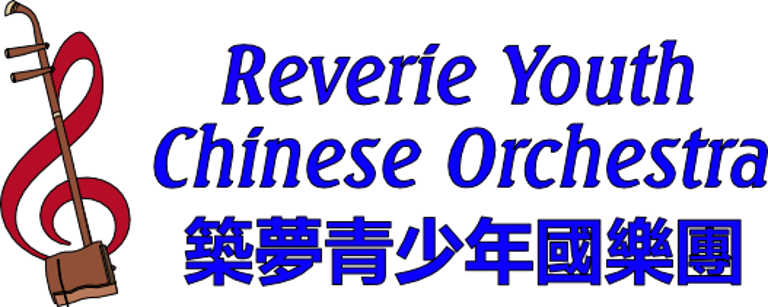
About Chinese Orchestra
The modern Chinese orchestra, or guoyuetuan (國 樂 團), is organized along the lines of the Western symphony orchestra in that both have a conductor, full scores, and instruments grouped in sections. The Chinese orchestra has four sections: bowed string, plucked string, wind, and percussion. The Chinese orchestra does not have a brass section and the Western orchestra does not have a plucked strings section.
The bowed string section includes several sizes of erhu-type instruments that are similar to the Western violin family of instruments. The bowed string section is subdivided into two sections and the erhu first chair is the concertmaster.
The plucked string section is unique to Chinese orchestra and includes instruments such as the pipa, yangqin, and guzheng. Plucked instruments have always been popular historically in China and it is this section that most exemplifies the unique sound of the Chinese orchestra.
The wind section includes instruments such as the dizi, sheng, and, suona which are similar to the Western concert flute, organ, and oboe, respectively.
The percussion section incudes many different types of gongs, cymbals and drums.
Chinese orchestra may also include some Western instruments such as the cello to increase the range necessary for certain types of music.
History of Chinese Orchestra
The modern Chinese orchestra originated in the early 20th century when musicians and educators sought to standardize and improve the myriad Chinese regional musical traditions and instruments by adapting traditional Chinese instruments and music to modern Western musical scales, notation, and theory.
Ensemble music has always been an important part of Chinese culture and China has had a rich musical tradition for thousands of years. Most modern Chinese music and instruments can be traced back to the Tang Dynasty (618-907 AD), an unusually cosmopolitan and internationalist period in Chinese history.
In 1927, the Ministry of Culture of the Republic of China directed Tsai Yuan Pei (蔡元培) to establish the Shanghai Conservatory of Music (上海音樂學院). Tsai was a famous Chinese scholar who had previously been the president of Peking University, and founder of the Academia Sinica. While at Peking University, Tsai founded the Peking University Music Society in 1919 as a laboratory for modernizing Chinese music. For example, one of Tsai's faculty members, Liu Tien Hua (劉天華), redesigned the erhu to play Western scales and wrote compositions for the expanded pitch and range of the modernized instrument. Liu popularized the practice of having more than one player of a certain instrument in a Chinese ensemble, paving the way for a full Chinese orchestra.
In the 1920s and 1930s, scholars deployed across China to collect data about local music and instruments and synthesized their findings into a unified Chinese musical system. They studied the various regional variations of traditional Chinese instruments and created standardized versions with a standardized and expanded tuning. These standardized Chinese instruments ("reformed instruments") were then organized along the lines of the Western symphony orchestra. Chinese musical notation and musical tones were also standardized along Western lines. The result of these efforts is known as guoyue (國樂), literally National Music, or Chinese Orchestra. In guoyue, the musicians are arranged like a Western symphony orchestra with a conductor and sections made up of families of instruments. The reformed Chinese instruments correspond to the various sections. Many classic Chinese music pieces were rewritten for the new guoyue style. Because guoyue is only about a century old, it does not have the comprehensive body of works and scholarship when compared to the much older classical Western music. Therefore, guoyue borrows aspects of Western music and scholarship where there is no traditional Chinese precedent.
In 1935, the Central Broadcasting Company of China, later known as the Broadcasting Company of China (中國廣播公司 “BCC”) of Nanking, China, established the first modern professional Chinese orchestra (the "BCC Chinese Orchestra"). The BCC Chinese Orchestra was a landmark in the development of Chinese music. The BCC Chinese Orchestra established the definitive form of the modern Chinese orchestra: four sections (bowed string, plucked string, wind, percussion) with orchestra members facing the audience in a semi-circle formation around a conductor.
The BCC Chinese Orchestra expanded the range of traditional Chinese instruments and improved them to Western standards. The BCC Chinese Orchestra introduced new instruments to the Chinese orchestra including: zhonghu, dahu, dihu, and xindi to achieve the lower pitch range of Western orchestras.
The BCC Chinese Orchestra originally performed only for on-air music programs on the BCC's radio network. The BCC Chinese Orchestra performed its first public concert in Chungking in 1942, where the Orchestra was based during the Second Sino-Japanese War. In 1949, the BCC Chinese Orchestra relocated from Nanking to Taipei, Taiwan.
Today, Chinese orchestras can be found throughout greater China and in overseas Chinese communities around the world. Despite its relatively short history, Chinese orchestra is now well established and proudly representing Chinese culture in countries all around the world.


